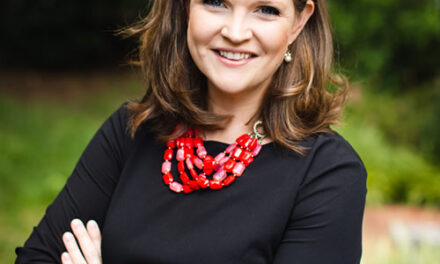For the Piano Gala concert sponsored by the Piedmont Music Center, Eastern Music Festival musicians returned to their long-time main venue Dana Auditorium on the campus of Guilford College. This concert featured faculty pianists Marika Bournaki, Awadagin Pratt, and William Wolfram, who also announced selections and changes in the printed program. Wolfram described this as the “Second Annual Piano Gala without a theme.” One selection was played by one of the festival’s 13 piano students, Narae Lee, from Seoul, South Korea.
Ludwig van Beethoven’s (1770-1827) Piano Sonata in D minor, Op. 31, No. 2 (“Tempest”), perhaps because of branding by nickname, is the most popular of the three sonatas of Opus 31. These works mark a major stylistic change presenting as Beethoven’s middle period, in which he discarded ornamentation and virtuosity for the sake of well-defined, simplified structure. The title has more to do with the composer looking back at the Sturm und Drang of such composers as C.P.E. Bach. When asked about the term, Beethoven quipped, “Read Shakespeare’s Tempest.” Perhaps he did not know the play well – it is a warm human fantasy and not about storms with the exception of the opening. The Largo, Allegro movement juxtaposes slow and fast and low and high registers. The Adagio is full of rich melodies of extraordinary intensity. Constant chromatic harmony gives the Allegretto finale an undercurrent of sadness. Some critics have compared it to a slow-paced perpetuum mobile with its steady, ceaseless flow of sixteenth-notes.
Bournaki, who opened the program, seems to be everywhere at this year’s festival, having to rush to a rehearsal after her Beethoven performance. She brought a very refined and graduated dynamic range to the work. I especially liked the brief, delicate, and hushed pp episodes between repeats of the stormy runs in the first movement. Her playing of the intense slow movement was superb. Her pacing of the finale was ideal.
Humoreske, Op. 20, by Robert Schumann (1810-56) came next, played by Wolfram. This work is very mercurial with an almost schizophrenic quality to its instantaneous changes of character among its seven continuous sections. The qualities of Schumann’s dual emotional personifications, Florestan and Eusebius, are widely present.
Wolfram’s articulation of the many hair-triggered turns was breathtaking. Crossed hands verged upon interwoven fingers. His dynamic range and care for phrasing were outstanding.
After a brief intermission, Wolfram announced the next selection, the Sonata No. 2 (Sonata-Fantasy) in G-sharp minor, Op. 19 (1892-97), by Alexander Scriabin (1872-1915), played by Lee. Scriabin spent five years constantly fussing, fiddling, and reorganizing the score as he struggled to transfer what he had experienced in a state of ecstasy to the real world. In a note appended to the score, the composer writes the work reflects the influence of the sea at night in the first movement, with a middle section in the key of E portraying the moonlit sea and the second movement representing the vast ocean under stormy agitation.
Lee is clearly one of the EMF’s more advanced students. She played the with confidence without a score like her professional colleagues. There was no want of power in her technique, and she interpreted the richly romantic piece with a fine since of style.
The Prelude, Choral, and Fugue, Op. 21 (1884), by César Franck (1822-90), followed, played by Pratt. Franck was a master of musical structure and a solid contrapuntist as reflected in his favoring canons and fugues. His outstanding characteristic is an unceasing creation of unity by using a cyclic structure and having multiple dominant themes reappearing in different sections of the same piece. Most of his life, Franck was composing for and performing on the organ. Opus 21 is a product of renewed interest in the piano towards the end of his life. The prelude’s initial theme is a restless syncopation that runs throughout the entire work. Fragmentary sections between statements of the first theme blossom later in the fugue. The prelude merges seamlessly into the choral, in which melody and harmony are closely intertwined.
Pratt brought considerable power and remarkable agility to his performance, holding the work tightly together with a marvelous sense of style. His control and integration of the themes and architecture were breathtaking.
Fans of Wolfram ought to sample his series of opera transcriptions by Franz Liszt, part of Naxos’ complete recordings of Liszt’s keyboard works. (Liszt v. 20, Naxos 8.557014; v. 31 Bellini Operas Naxos 8.572241, and v. 36 Wagner Operas Naxos 8.572895.) Pratt’s fine EMI recordings are widely available.
For upcoming events at this year’s Eastern Music Festival, see our calendar.











